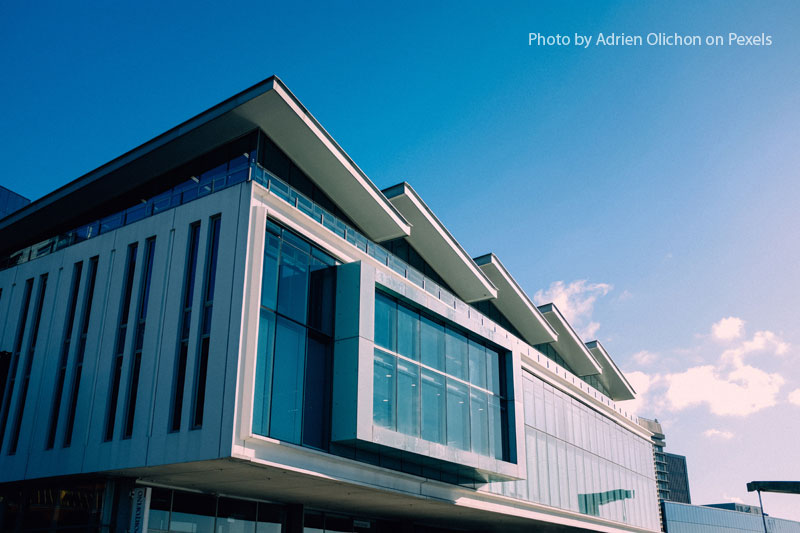Great architects generally don’t design buildings in isolation. Rather, they look at the area and build something that fits the surroundings. And while it is one thing to design a building that will fit in with others on the block, it’s another to add local area influences and design elements. While the former option can work for some buildings, the latter is usually preferable since its commercial architecture showcases what makes a local area unique and desirable.
When designing a building, there are several things you can do to add local area influences, such as:
- Research the area. Learning about an area often means exploring it, talking with residents, and researching the community’s history, values, and needs. This information gives you the context to align your build with the surrounding area. This strategy sounds like an obvious tip, but you would be surprised by how many buildings are designed and constructed by a team oblivious to the area’s physical, social, and cultural aspects.
- Understand the climate. Buildings aren’t designed only with aesthetics in mind; they must also be functional. And this often means understanding the local climate and geography. Once you know more about the local characteristics, you can design to accommodate the region. For instance, you can leverage the area’s natural light, ventilation, precipitation, and natural energy sources. And this often leads you to a more energy-efficient, comfortable, and functional building. Additionally, it will blend with the natural environment much more, which is a great way to create a memorable space.
- Look at the history and diversity. A place rarely has one defining characteristic. Instead, they are usually a mix of historical traits, diverse groups, and competing creative influences. However, you can look at these elements for inspiration in your current building design. For instance, you can incorporate artwork from local culture or use design features from historic buildings in the area. This strategy is one way to celebrate the diverse influences that make any place unique.
- Get involved with the community. This aspect of incorporating local influences is often overlooked. But the reality is that the more involved with a community you become, the more influential your designs will be. And then it is only a matter of time before you see your building being used as inspiration for other new additions to the community. One great way to get involved is through philanthropic work. Most municipalities have specific issues they struggle with addressing. By becoming involved in these issues, you can become part of the solution, which often secures one’s place as a pillar within the community.
- Create space to highlight local artists. Viewing street art often gives you a great sense of local culture. And while much of this is still illegal, some buildings have devoted unused areas (such as alley walls) to highlight local artists. This option is sure to lead to a unique setting, which often becomes a meeting point for community events. However, if you don’t want something this extreme, you could invite local artists to showcase their current pieces in your atrium or lobby if that is a part of the build. And while this may not be appropriate for all building types, it’s a good way to highlight local influences if it is appropriate.
- Learn from your predecessors. Any metropolitan area has multiple famous buildings, many of which became famous for their architectural design. Learning about these buildings is relatively easy, allowing you to keep elements you like in their designs and improve upon elements you don’t like. It’s also a good idea to research buildings that failed or don’t fit into the local culture. Learning more about these buildings can tell you why they failed, which ensures you won’t make the same mistakes. Learning local best practices is always a great way to ensure your commercial architecture will be all you hope it to be.
- Source your materials locally. This option is one of the best ways to incorporate local influences into your new building. After all, every region has different local materials, which are often used since they are cheaper to transport than materials made or sourced elsewhere. Using locally sourced construction materials ensures that you will fit into the culture of a community since you will be using the same materials commonly found in the community. Your Hartsdale NY commercial architect can assist you through this process.
- Solicit community input. Community opposition is one of the biggest challenges with any new build, especially large-scale designs. There will always be a group that embraces the NIMBY philosophy (Not In My Back Yard) and opposes anything new. However, sharing information about your building and getting resident input from the early stages of the design can help you overcome the opposition. They may even have some great ideas about how to feature local elements. After all, residents are often much happier with a design that highlights the local culture than one that does not.
- Create bridges in the community. Successfully incorporating local influences is more than adding a few details to your design; it’s the process of becoming part of the community. And the reality is that many communities are focusing on ways to support interconnectedness for residents and businesses. For example, greater emphasis has been on walkability, urban infill, access to civic and recreational spaces, mixed-use development, green spaces, and public transportation. A great building design considers these elements in conjunction with how people will use the building. And from there, you can incorporate design features that support community interconnectedness.
- Look at the buildings in the immediate vincinity of the new building – How tall are they? How far are they set back from the street? Is there an aesthetic the town, city, or village is trying to create? How will lighting the building effect its look at night?
Designing a building that features local influences is no easy task. And the reality is that there is no one-size-fits-all solution. Every community is unique, so every design approach must also be unique to reflect the local culture and characteristics.
Contact Jeffrey Jordan Architect today to learn more about adding local influences into your new build. This premier commercial architectural firm serves the Hartsdale, NY area.
Located in the Greater New York area, Jeffrey Jordan Architect specializes in the design of high-end projects such as luxury apartment and townhouse renovations, schools, churches, temples, and offices.

